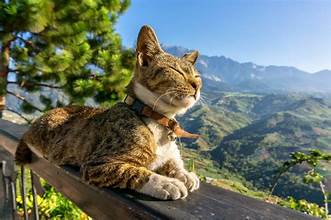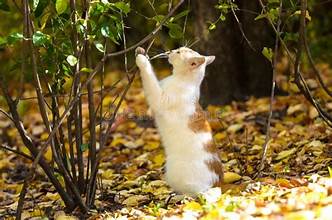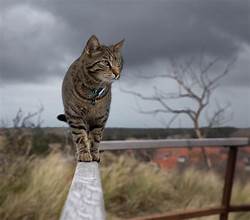Deciding whether to let your cat venture outdoors is a question many cat owners grapple with. While the idea of your feline frolicking in the great outdoors might seem idyllic, weighing the potential risks and benefits is crucial before deciding. This article will explore both sides to help you make an informed choice.
Benefits of Letting Your Cat Outside
- Physical Exercise and Mental Stimulation
Outdoor environments provide endless opportunities for your cat to explore, hunt, climb, and run. This physical activity promotes better muscle tone and weight management, while the stimulation from sights, smells, and sounds enhances their mental well-being.
- Natural Instinct Fulfillment
Cats are natural hunters, and the outdoors offers a chance to satisfy their instinctual need to stalk, chase, and pounce. This can reduce boredom and related behavioral issues like over-grooming or destructive tendencies.
- Sunlight and Fresh Air
Outside exposes cats to fresh air and natural sunlight, benefiting vitamin D synthesis and overall health.

- Reduction in Indoor Stress
Some cats may feel confined indoors, especially in multi-pet households. Access to the outdoors can help them release pent-up energy and reduce stress.
Risks of Letting Your Cat Outside
- Traffic Hazards
Roadways are among the biggest dangers to outdoor cats. Unfortunately, accidents involving vehicles are common, even in quieter neighborhoods.
- Predators and Other Animals
Outdoor cats may encounter predators like coyotes, foxes, or larger dogs. Fights with other cats can also lead to injuries or the spread of diseases like FIV or FeLV.
Cats roaming outside are at a higher risk of contracting parasites (fleas, ticks, and worms) and diseases, including toxoplasmosis and feline distemper.
- Poisoning or Toxic Plants
Outdoor cats might accidentally ingest harmful substances such as antifreeze, pesticides, or toxic plants.

- Loss or Theft
Cats allowed to roam freely can get lost or stolen. This is particularly risky for cats with high monetary or sentimental value.
- Impact on Local Wildlife
Cats are effective hunters and can negatively impact local bird and small mammal populations, which may not align with ecological conservation efforts.
Alternatives to Free Roaming
If you want to give your cat the benefits of the outdoors while minimizing risks, consider these safer alternatives:
- Leash Training
Many cats can be trained to walk on a harness and leash, giving them safe outdoor experiences under your supervision.
- Outdoor Catios or Enclosures
Catios are enclosed spaces that let your cat enjoy the outdoors without roaming freely. They offer safety from traffic, predators, and other dangers.

- Supervised Time Outdoors
Spend time outside with your cat in a secured yard or garden to ensure their safety while they explore.
- Interactive Indoor Environment
Enrich your home with climbing structures, scratching posts, and interactive toys to keep your cat active and engaged indoors.
Factors to Consider
- Your Cat’s Personality
Some cats are more adventurous and would thrive outdoors, while others are content and safer indoors.
- Your Living Environment
Urban areas with heavy traffic pose higher risks, whereas rural or suburban areas offer safer outdoor options.
- Health and Vaccination Status
If you decide to let your cat outside, ensure it is up-to-date on vaccinations and treatments for fleas, ticks, and worms.
- Local Laws and Wildlife Considerations
In some regions, letting cats roam outdoors might be discouraged or restricted due to wildlife conservation efforts or leash laws.
Final Thoughts
The decision to let your cat outside ultimately depends on your circumstances and your cat’s personality. While outdoor access has undeniable benefits, the risks can often outweigh them. Fortunately, with alternatives like catios and leash training, you can give your feline friend the best of both worlds.




